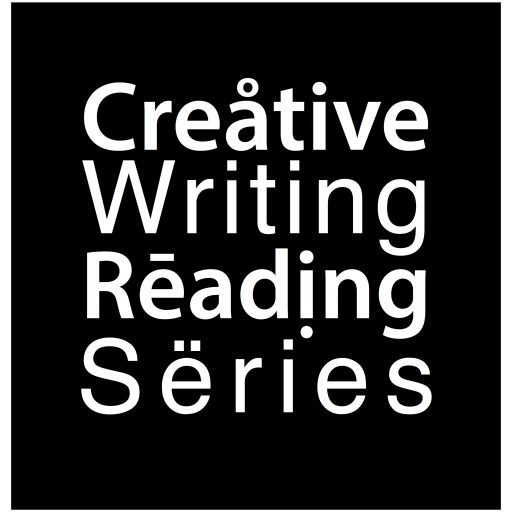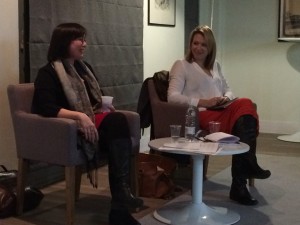Dorothy and Sonia both lecture at the University of Kent. Dorothy is a poet and editor of Litmus magazine, which focuses on intersections between science and poetry. Sonia is a novelist and poet who also teaches at Canterbury Christ Church. Her previous novels include A Likeness and The Realm of Shells (Fourth Estate / Harper Perennial).
Dorothy read from two recently published works – Ephemeris, her debut collection from Nine Arches Press, and Places of Articulation, a chapbook from Dancing Girl Press, as well as some very recent work. An ephemeris – as the definitions from the OED in the collection make apparent, is, in one of its meanings, a diary or calendar giving the positions of the planets on a daily basis – binding together the astronomical with ideas of change and perception by an observer over time. Thus Ephemeris combines, as one if the lines from ‘Music of the Spheres’ says, ‘maths and harmonies in the macro/micro’ – mixing and understanding relations between the personal and the astronomical. Take, for example, ‘Goldilocks Zone’, one of the poems Dorothy read:
Not too hot, not too cold, but just right.
Robert Southey
Meet you on Titan,
lex loci, take a lifeboat
+++as the red giant bloats
luminary & exhausted
we call safe haven
the big engulfing
human sterility is a no-no
deep freeze mother
primordial grime
don’t speak now, hypoglycaemics.
Titan, shrugging freeze
trigger clement
meet you on the hillside
say what a small new world
don’t say toska
toska won’t cover this
The Goldilocks Zone, or the circumstellar habitable zone, is the region around a star within which planetary-mass objects with sufficient atmospheric pressure can support liquid water at their surfaces – it is the place where life can be supported. Should Earth be become uninhabitable, Titan, the largest of Saturn’s moons, is, according to astronomical scientists, the place in our solar system most likely to be able to support human life. Astronomical research meets other discourses – it starts off, for example, sounding like a love poem. It is the called the colloquial Goldilocks zone in the poem, rather than its more scientific name, partly because of the fairytale status of Goldilocks – a children’s story in a collection where mothering is a central concern, and in a poem where this central concern of mothering is exploded to its macro level – the Goldilocks zone is an important concern only because ‘human sterility is a no-no’ – we imagine ourselves to keep reproducing ourselves. Poet laureate meets fairy tale; Shakespeare’s brave new world is diminished, yet even the Russian toska – the word Nabokov claimed was too large for the English language to express, cannot ‘cover it’.
Nabokov said
No single word in English renders all the shades of toska. At its deepest and most painful, it is a sensation of great spiritual anguish, often without any specific cause. At less morbid levels it is a dull ache of the soul, a longing with nothing to long for, a sick pining, a vague restlessness, mental throes, yearning. In particular cases it may be the desire for somebody of something specific, nostalgia, love-sickness. At the lowest level it grades into ennui, boredom.
With this, Goldilocks Zone starts to meet the later poetry, some of which is collected in Places of Articulation, and its overt concern with language use and failure. Dorothy’s current research is on aphasia – speech conditions – and takes full advantage of the resources of a linguistically innovative poetry – fracture, repetition, assonance, word association – to develop new ways of thinking about various speech conditions. In performance this tends towards a staccato delivery – poetry emerges from and as stutter. Dorothy talked about drawing on ethnographic studies, translating the sentiment into a poem until the original line becomes unrecognizable. Hear Dorothy reading some of the poems from Places of Articulation on the Free Range website.
Sonia gave us one of her first readings of her new – not yet published – novel – Eden: a response to Hemmingway’s final, unfinished novel The Garden of Eden. This metatexual novel weaves together three narratives – that of Pen, a lecturer in Modernism, who is writing on Gertrude Stein, but rather guiltily devouring The Garden of Eden instead; Catherine Bourne – the heroine of The Garden of Eden and, as Sonia said, Hemmingway’s strongest female character – become aware of her role as character; and Hemmingway himself, laboring over the novel in the years leading up to his death. Sonia read a section from each narrative – Catherine in particular was memorable for me – a character painfully aware that, as her husband’s attention slips, so too does her creator’s – her awareness that she is a character losing focus and depth, whose environment is closing in around her was gripping, and her struggle with her male creator to be realized as a character demanding attention irrespective of the attentions of her husband made for powerful feminist critique.
The three narratives intersected, read with and against each other. Sonia too talked about her writing process – each narrative was written separately as one continuous narrative, with Hemmingway – who required plenty of research into his writing practices and the editorial process that went into the publication of The Garden of Eden – which was heavily reduced from the vast manuscript that Hemmingway left on his death – plotted first, then Catharine, then Pen, and only when written were they spliced together. The three tasters she gave us of these narratives left us all looking forward to the publication of Eden.

